Visiting Fougères France in Brittany town of Art and History
The town of Fougeres France is located in Brittany northeast of Rennes. The area was settled around 1000 years ago on a rocky peninsula at the bottom of a valley by the River Nançon. The town is known for its castle with 11 towers, which is also the largest medieval fortress in Europe.
The history of Fougères revolves primarily around its medieval château, which acted as the impetus for the town’s development during the Early Middle Ages. Originally constructed from wood, the castle is perched on a rocky islet surrounded by hills, marshes and tucked into the bend of the River Nançon.
The Château de Fougères is a medieval castle and it dates back to the 12th century with improvements and changes taking place up to the 15th century. It was completely destroyed in 1166 by King Henry II of England but was immediately rebuilt. It changed hands a number of times during the ensuing centuries. Despite partial destruction, much of the castle remains, including the walls and 13 towers.
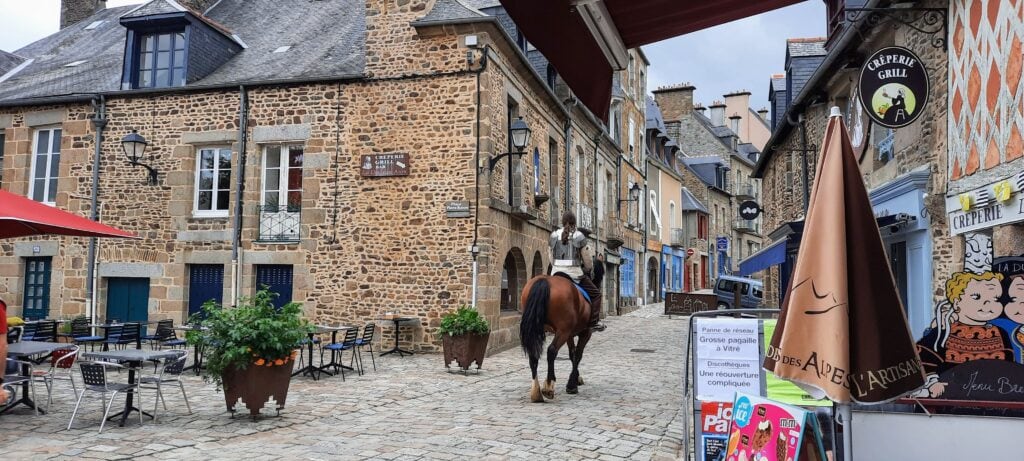
Xyuandbeyond is reader-supported. When you buy through links on our site, we may earn an affiliate commission. You can read my privacy policy here.
Exploring Fougeres
There are two halves to the town of Fougeres. The first is the Lower Town which is the Medieval Quarter and above that the Upper Town which was destroyed by fire in the 18th century and subsequently rebuilt.
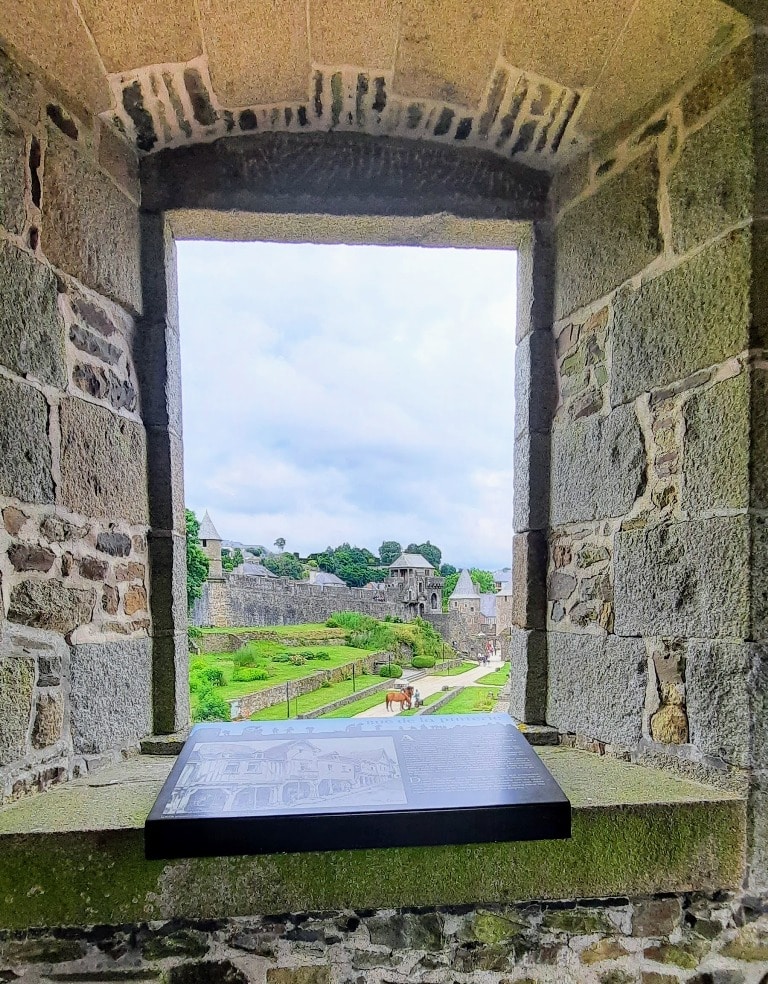
Fougeres upper town
Depending on where you parked you should head to upper Town and the Tourist Information Office on the Place du Theatre. Here you can grab flyers of all the information and sites to see throughout Fougeres.
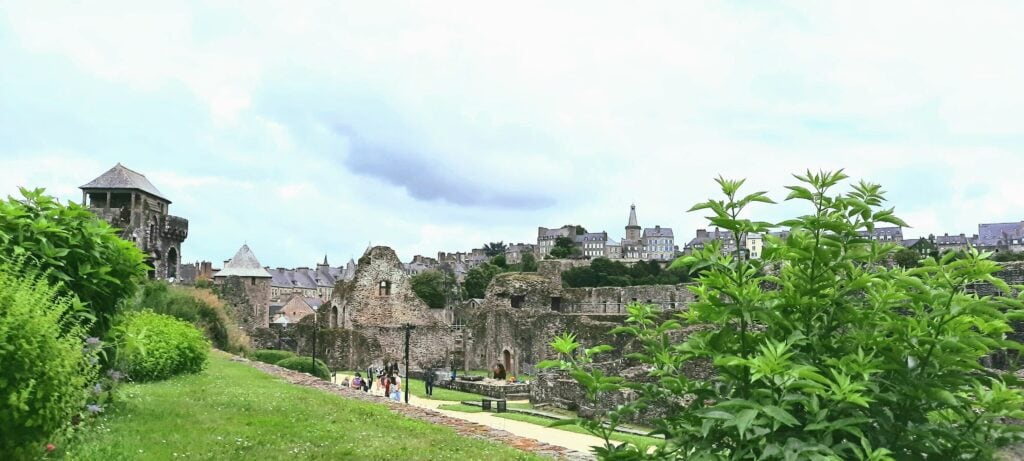
Place du Theatre
The Place du Theatre was formerly called the Place du Brûlis (burnt) following the fires which destroyed a lot of the upper town. The theatre itself has a more ornate, Italianate style and was inaugurated in 1886.
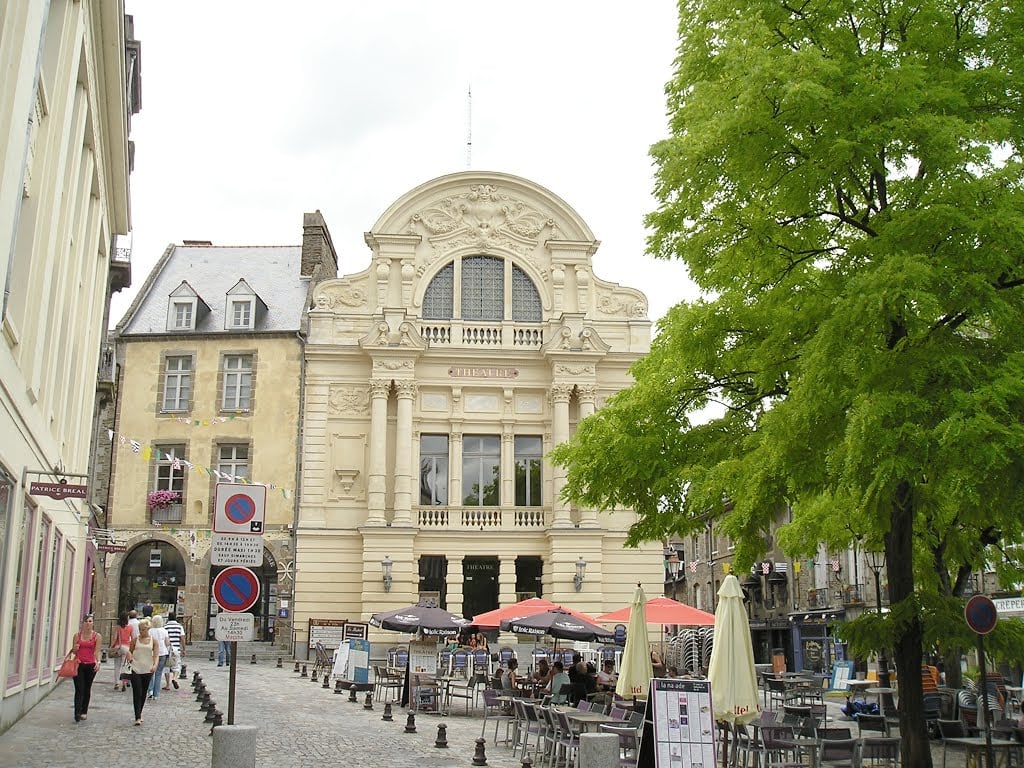
Rue Nationale
The main street in Fougères upper town is the Rue Nationale and this is where you will find the majority of boutiques, cafes and speciality stores in the town. If you are looking for handcrafted items this is the place to find them.
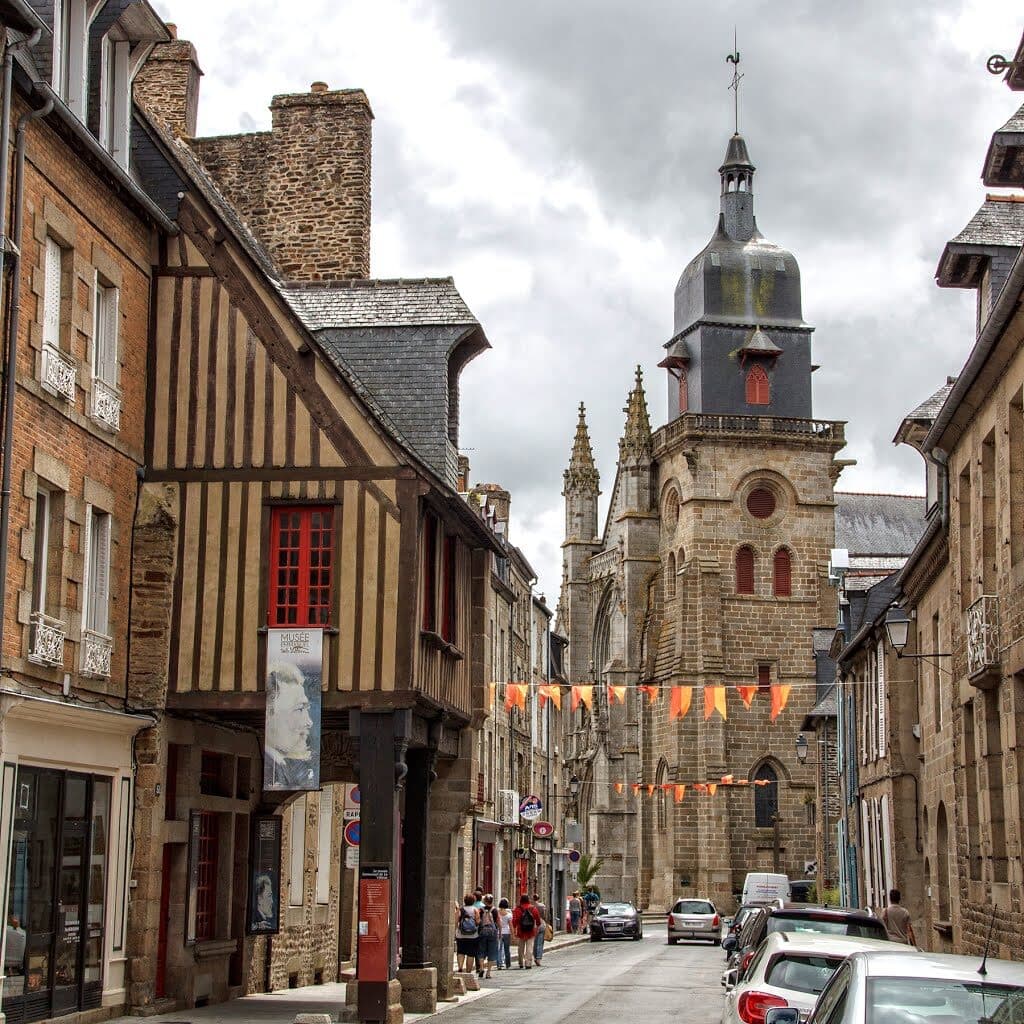
Emmanuel de la Villeon Museum
The Emmanuel de la Villéon Museum is also on the Rue Nationale, in the last-remaining timber-framed house with a front gallery. Villeon was a renowned Impressionist landscape artist and avant-garde painter who experimented with different styles and techniques throughout his artistic career. This collection of oils, pastels, gouaches, charcoals and inks traces his career through a selection of works.
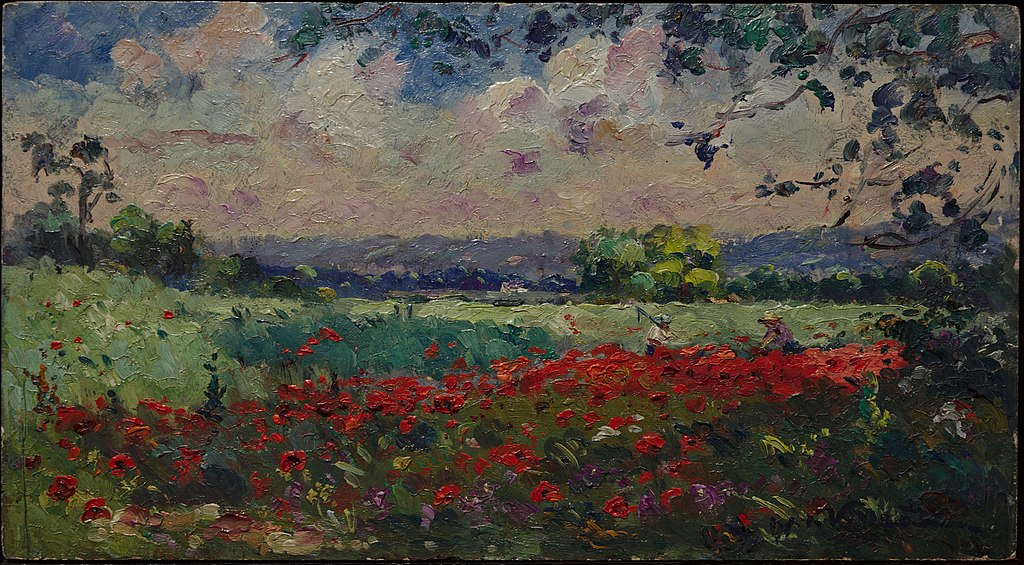
Fougeres Saturday market
If you are in the upper town on Saturday before noon you will find a very lively market in the town centre surrounded by some interesting shops, cafes, and restaurants.
Don’t miss out on trying some real Breton crêpes and galettes. Crepes are usually served sweet with sugar, jam or Nutella and the savour galettes are gluten-free and served with saucisse, cheese and eggs a perfectly portable breakfast.
You should also try some other Breton favourites washed down with a lovely Breton cidre.
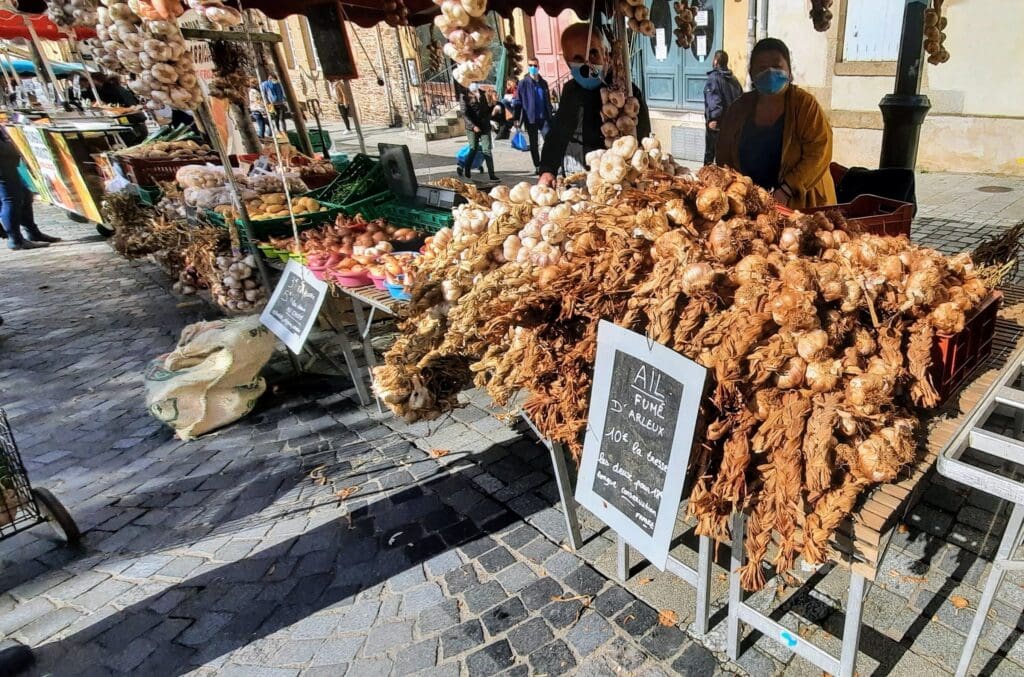
The Belfry
The belfry is the oldest in Brittany and was built in 1397 you can find it just off the Rue Nationale, it is the only one in Brittany apart from Dinan’s and the Fougeres one is the oldest.
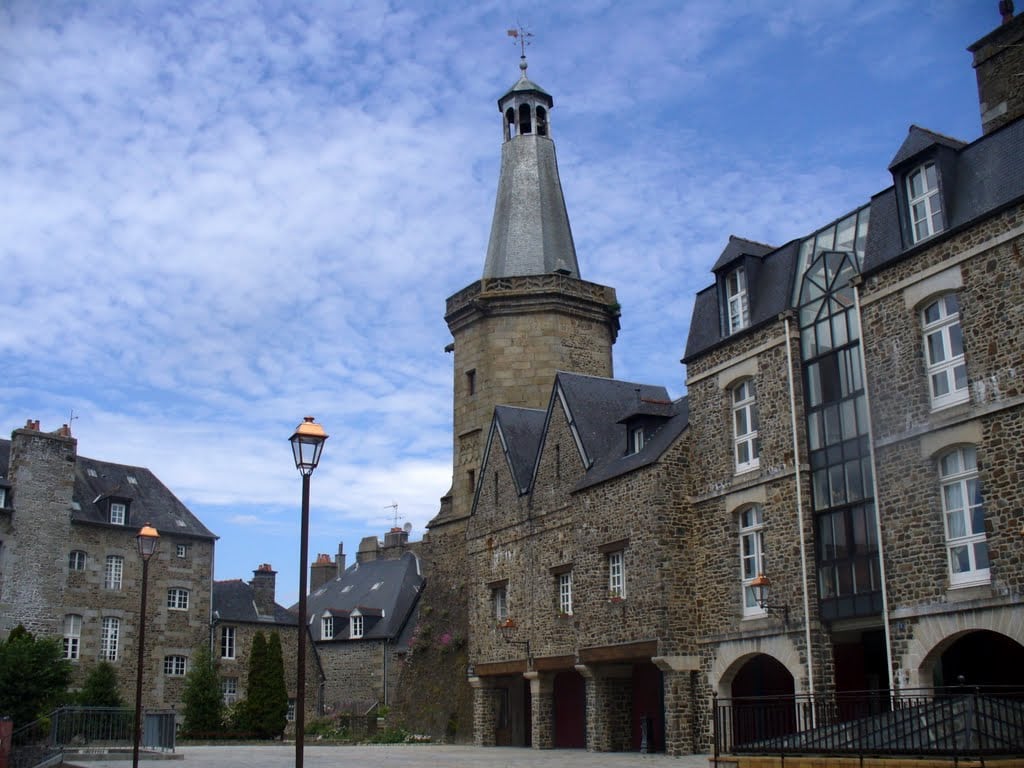
L’Artisan du Temps
An original and very interesting museum for both watch and clock enthusiasts. L’Artisan du Temps stands inside a magnificent sixteenth-century building. The first stop is the workshop, where you can observe the artisans making or repairing clocks and watches. Your visit will continue in the small museum with a collection of watches and clocks, including numerous masterpieces, driven by ancient and sophisticated movements.
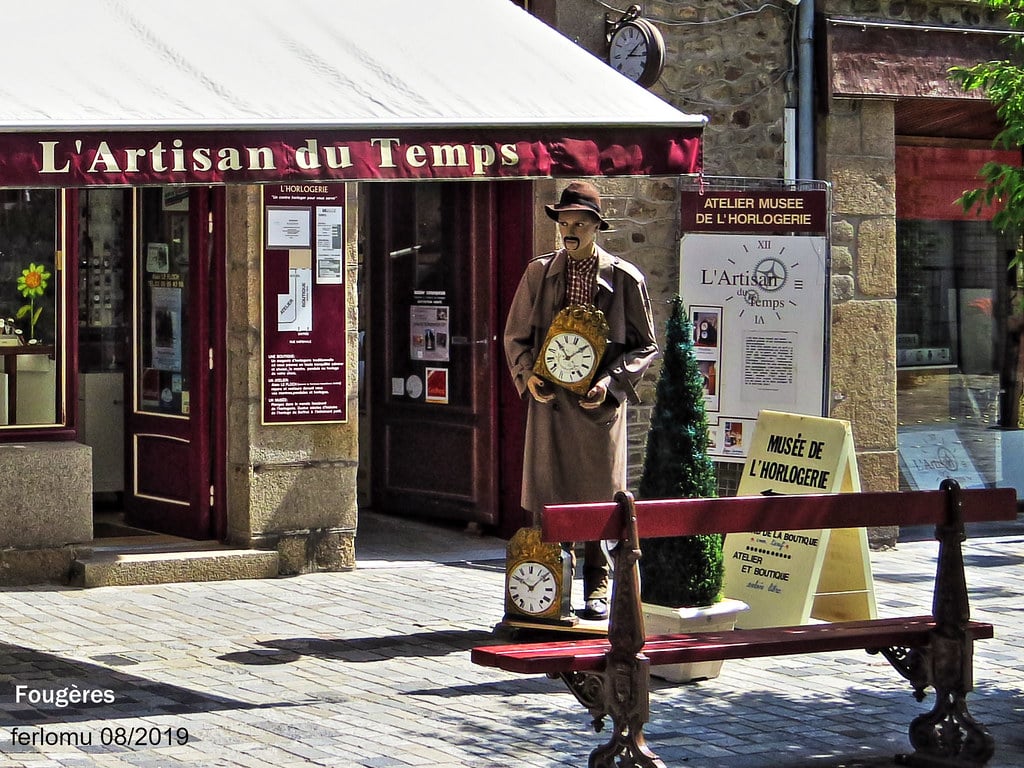
The Little Train
A small tourist train that will take you around the most interesting aspects of Fougeres and save your feet a little. The tour takes around 40 minutes and you can board it at the foot of the castle where you can buy your ticket from the driver. Prices: Adult €5.50 / Child from 3 to 12 years old: €3 Family pass: €14.
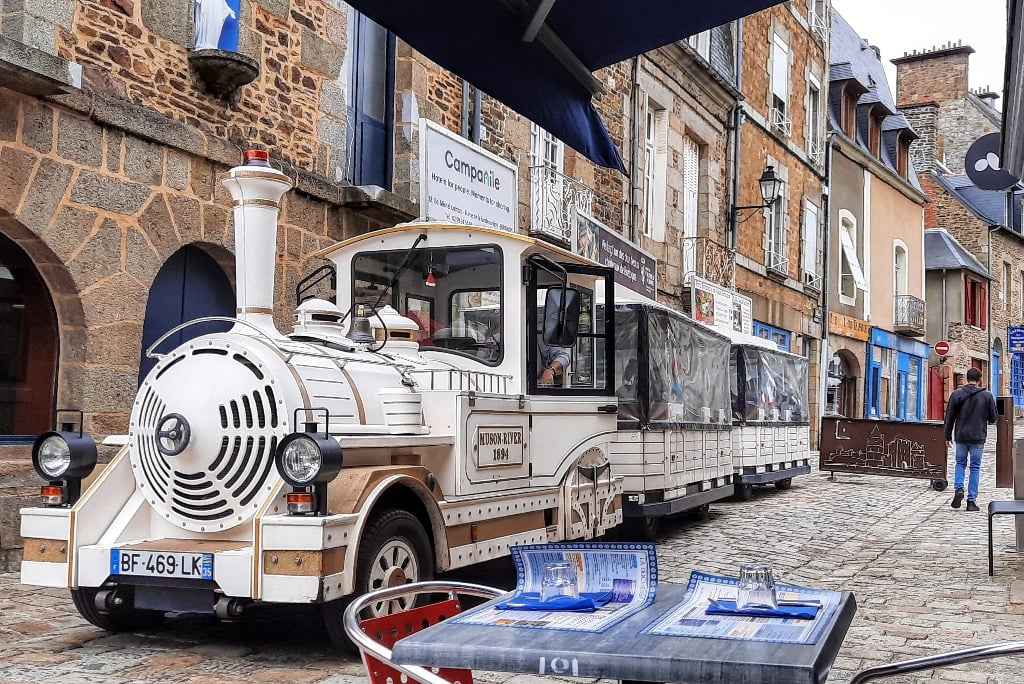
Literary Fougeres
The city is connected to the 18th-century writer and father of Romanticism François-René de Chateaubriand, whose sisters lived in the town. Chateaubriand was born in Saint-Malo and was raised in Brittany.
Victor Hugo, wrote Les Miserables in Fougères with the help of his mistress Juliette Drouet who was from Fougères. And Honoré de Balzac stayed in Fougeres for a few weeks to scout locations for his novel Les Chouans.

Balzac Stairs – Duchess Anne Stairs
Legend has it that the stairs went to the Saint-Sulpice church and were used by Duchess Anne to get to the church. However, another story says that it was at the top of the stairs that Balzac’s house stood and he wrote it into his novel Les Chouans.
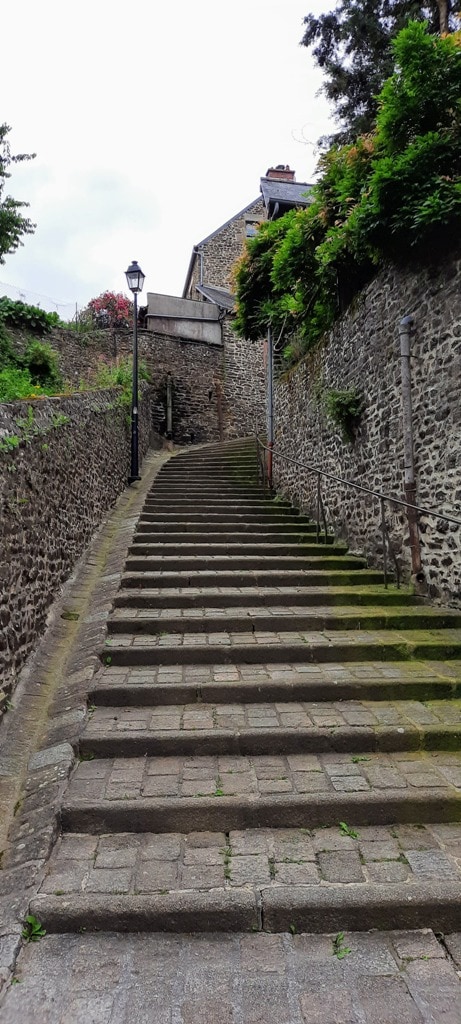
Syndicat CFDT – Labor union in Fougères
This was once the home of one of Chateaubriand’s sisters who lived in Fougeres and is now the offices of the Labour Union of Fougeres on the rue Chateaubriand. Chateaubriand is considered the founder of French Romanticism writing he was born in St. Malo and grew up in Brittany.
Church of St. Leonard
The church of St Leonard was built during the 12th century and then during the 19th century was re-furbished in what became known as neo-gothic style.
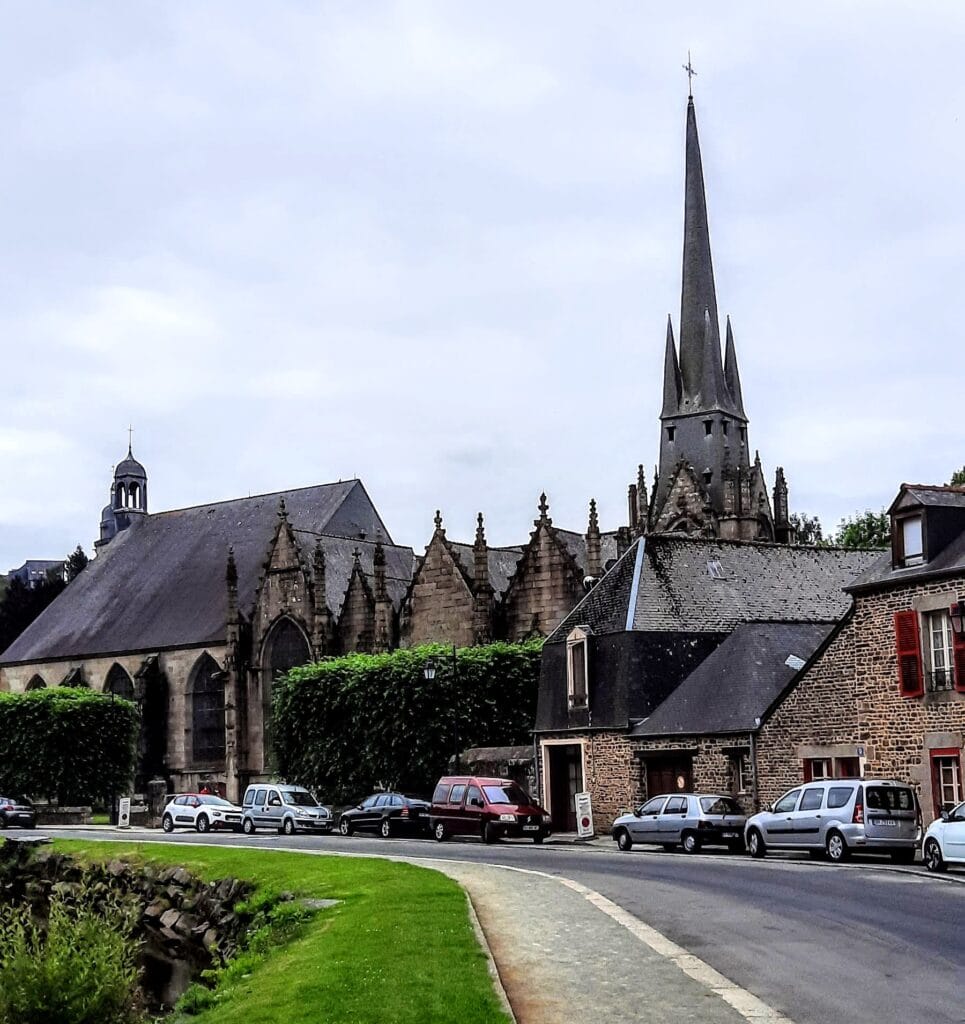
The stained glass windows depict the life of St. Benedict, and the gardens around the Church are outstanding.
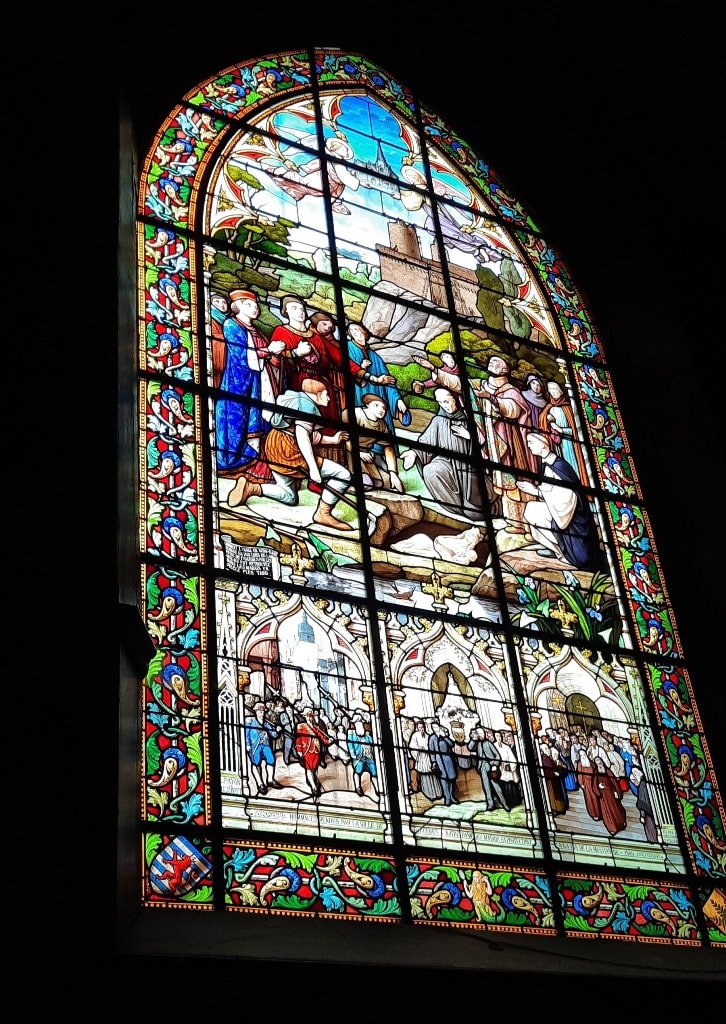
Place aux Arbres
The Place aux Arbres is a public garden organized around a landscaped garden taking the form of a valley where an artificial river meanders. Waterfall, flower beds, kiosks and pedestrian walkways adorn this beautiful garden and the path leads between the Upper and lower towns.
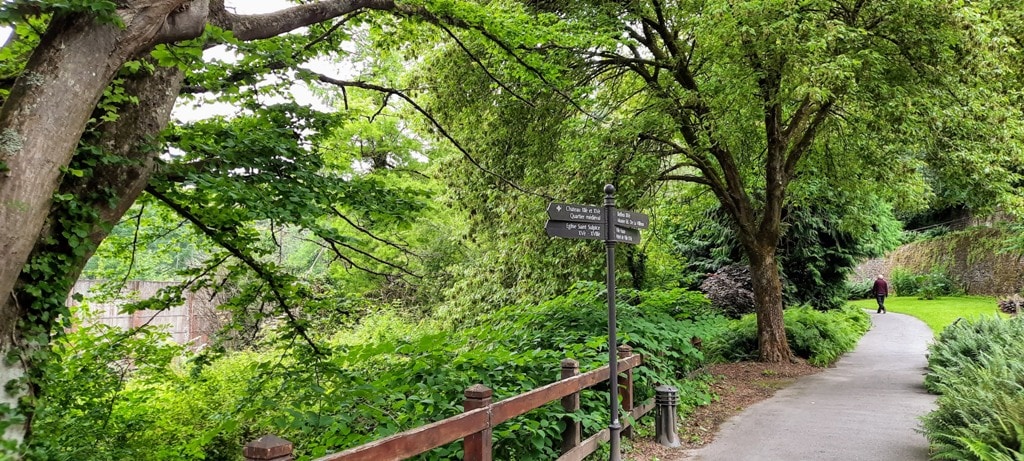
Fougeres lower town
Chateau de Fougeres
The first chateau was a wooden castle known as a motte and bailey built in the 11th century. By the 12th century, the first stone buildings near the wooden structure were begun. Around 1350, the castle belonged to the Count of Alençon, the King of France’s brother and new buildings were added to embellish and protect it.
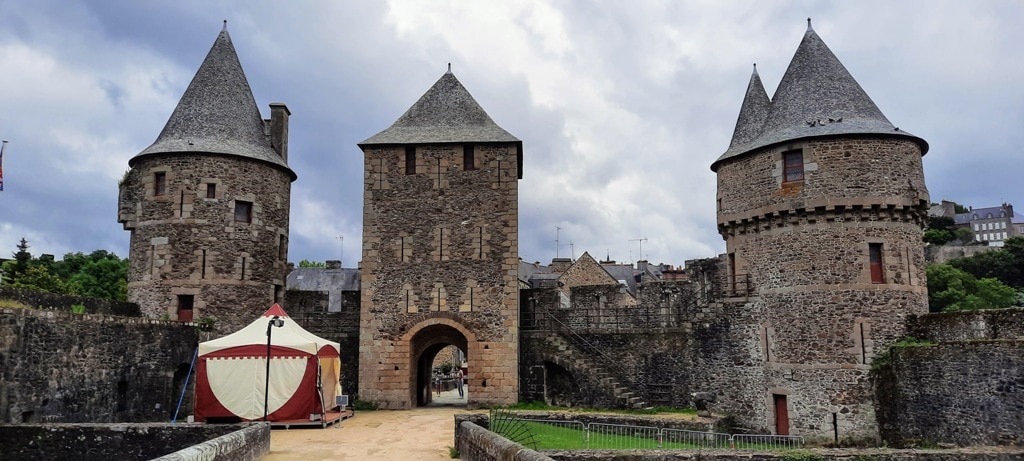
The large space inside the ramparts was the main area in medieval everyday life. It was also a place of refuge for the population in times of war. It housed all the facilities necessary for military operations (stables, forges, barracks, granaries), as well as the lord’s private residence.
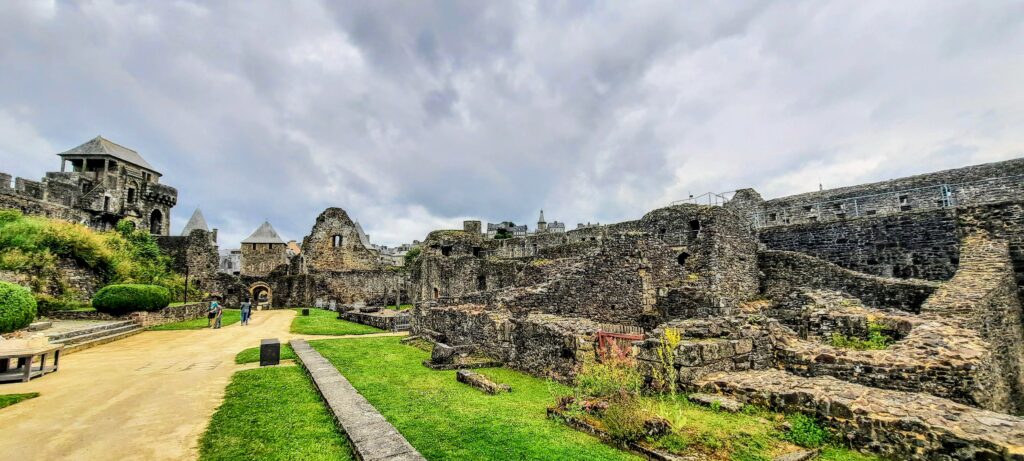
Later on, Pierre II and his son Jean I continued making improvements until the early 15th century. The ramparts were raised and made wider and the second keep, the Tour Mélusine, was erected.
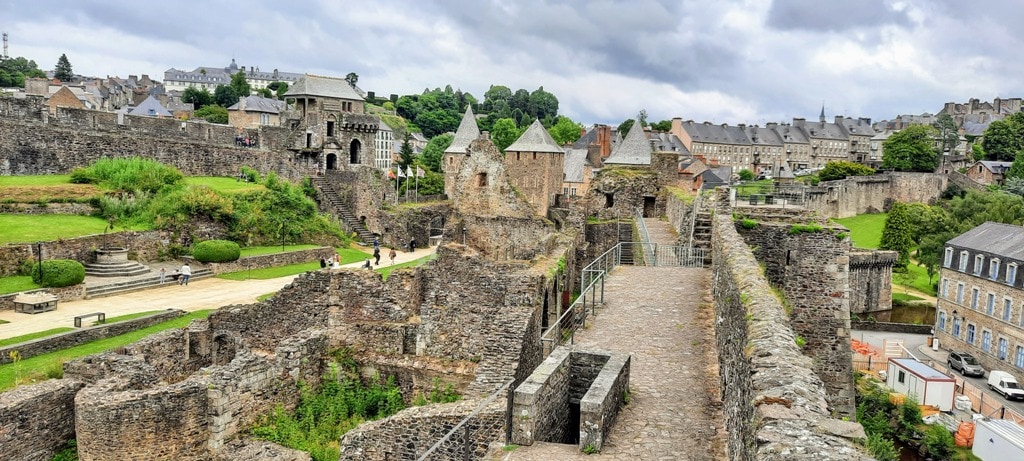
At the end of the 18th century, the castle was even turned into a prison. In the 19th century, the vast bailey became a huge pleasure garden and a museum was installed in the Tour Melusine. During the Industrial Revolution, a shoe factory was established within the castle.
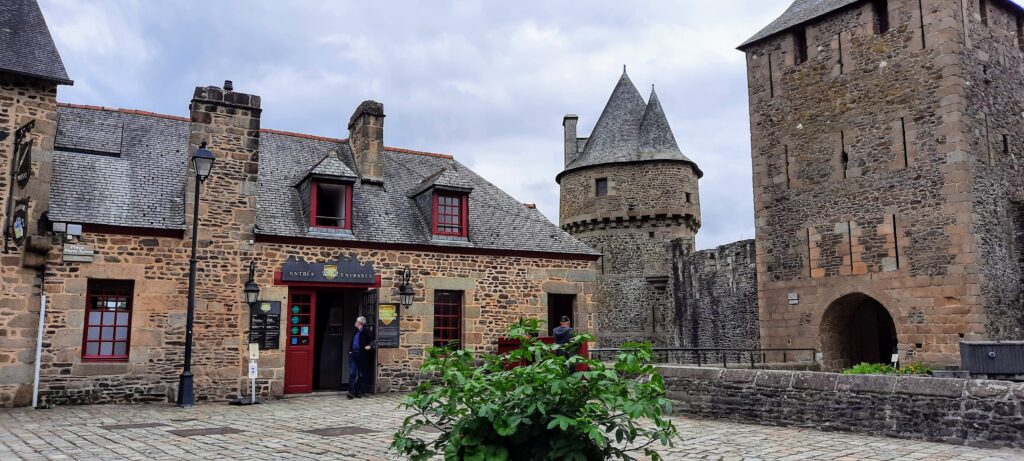
In 1892, the town council acquired the castle. It has been a listed building since 1862. Although the building largely retained its original appearance, some of the curtain walls needed to be cleared and sections of the walls rebuilt. The 18th-century alterations were removed and the castle was opened to visitors.
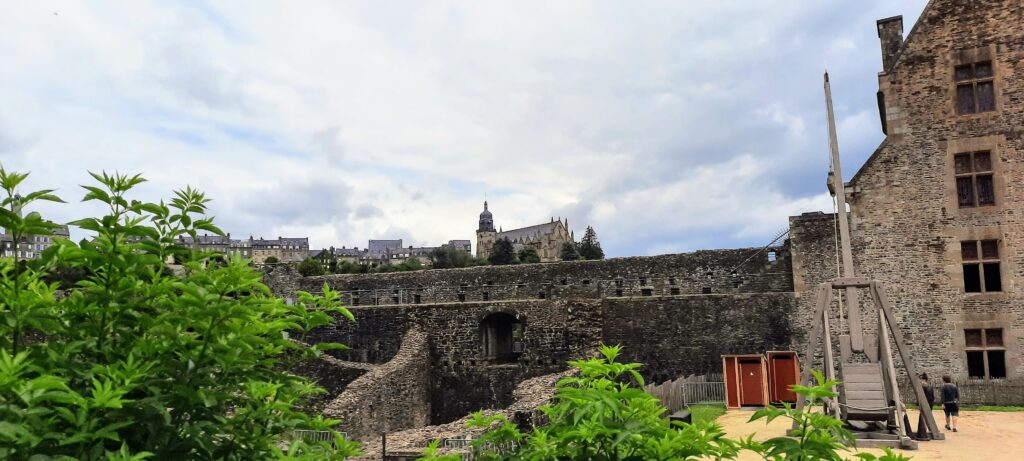
The Chateau is said to be the largest in Europe with four gates of which now only the Notre Dame gate remains.
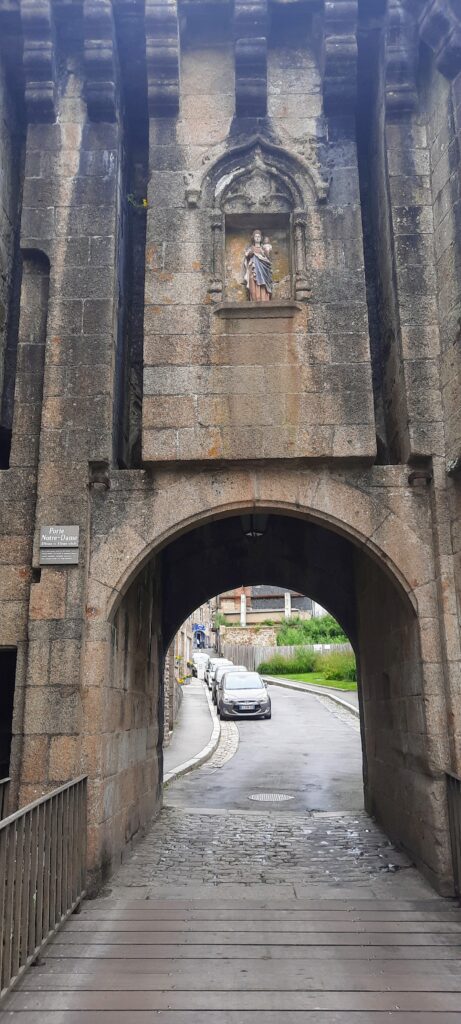
At the back of the Chateau look for Rue le Bouteiller where you will see a small courtyard with a water system flowing along the walls. Originally this system was used for milling for the castle supplies, these days however it is used to power the electricity for the Chateau.
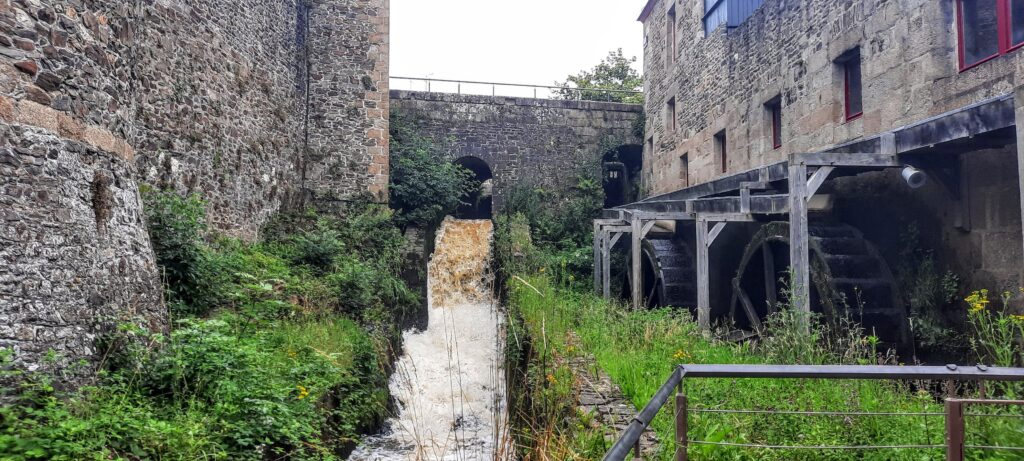
Medieval Quarter Fougeres
The Nançon River was the source of water that was needed by the tanners, and dyers located in the Medieval quarter so as you walk around the area you will see and hear the flowing waters used by these medieval workers.
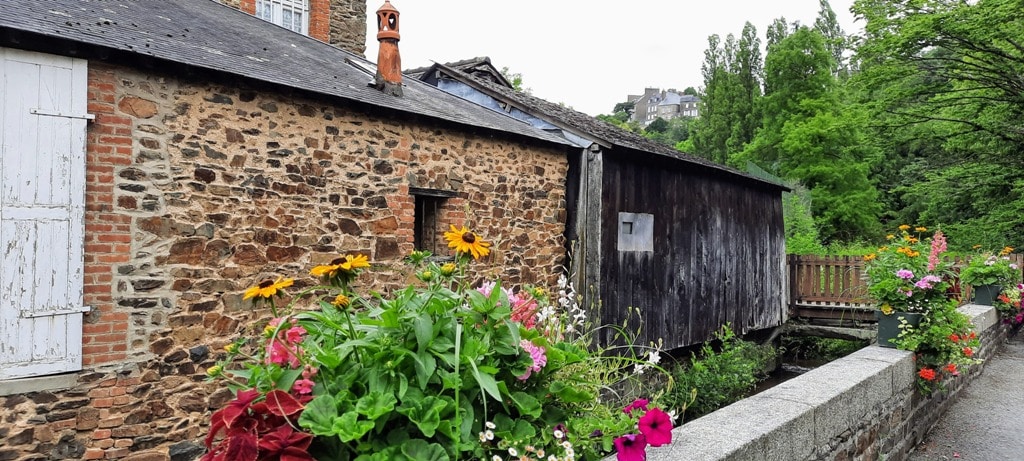
The medieval quarter in Fougeres is quite small with only a handful of medieval half-timbered buildings, many of them dating from the 16th and 17th centuries. You will see the walking route signs that will take you through the medieval quarter.
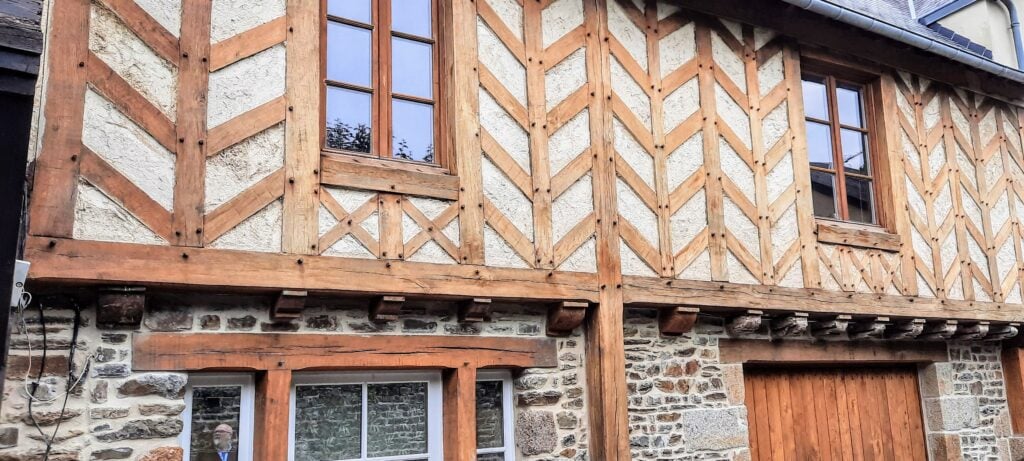
Rue des Tanneurs
As the name suggests, Tanners Street is where the medieval tanners used to live and work so the houses back onto the river where they could wash their hides and use the water for dying.
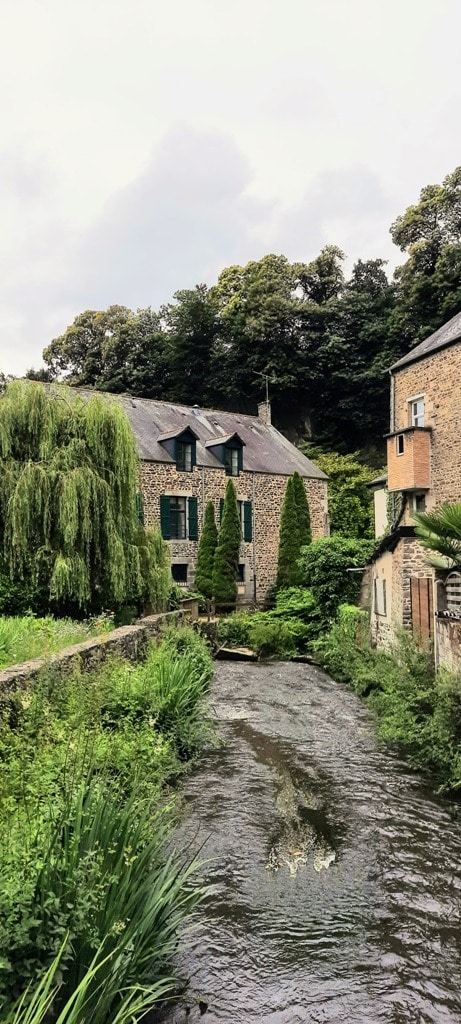
Place du Marchix
You will find the majority of half-timbered houses, notably the Maison de Savigny (14 and 15th century) on the Place du Marchix, rue de Savigny and rue des Fontaine where the first cattle market was held.
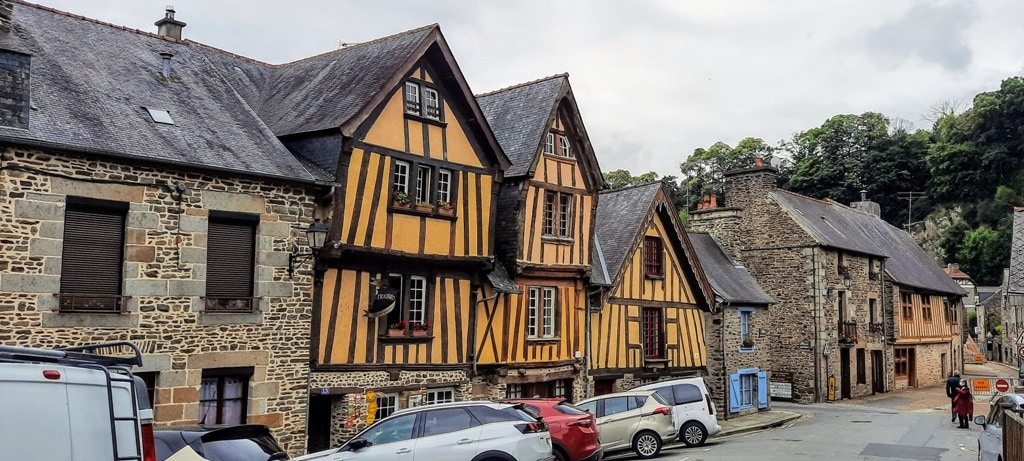
Saint Sulpice
The church of Saint Sulpice is considered one of the richest churches in Brittany with its gorgeous stained glass windows, a rococo choir, Louis XV-style woodwork and the medieval granite altarpiece.
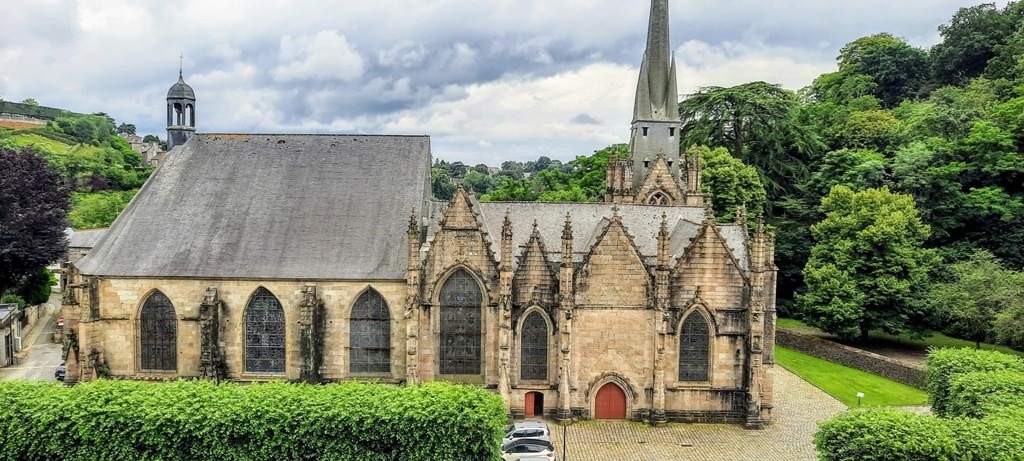
Make sure to find the statue of Notre-Dame-des-Marais which was in the original castle, and was thrown into the moat by the raiding English soldiers. It was found there in the 14th century and returned to the church.
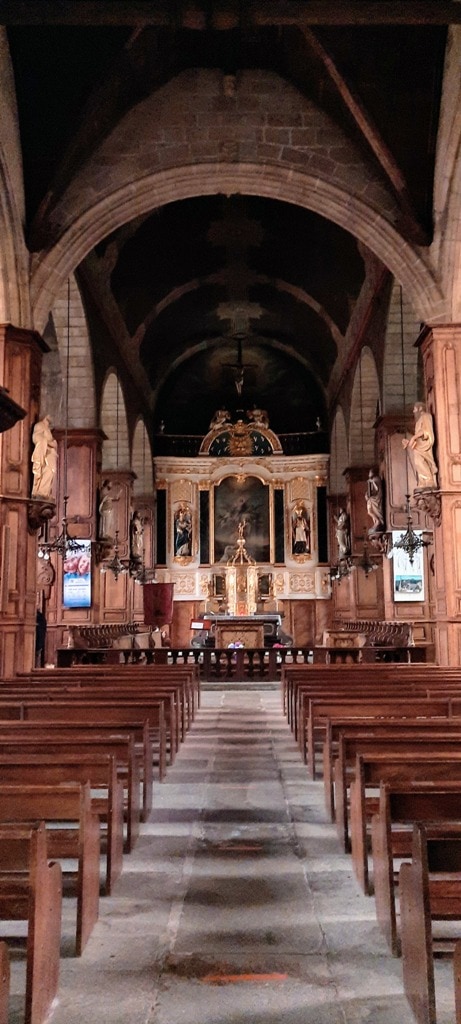
On the exterior facades, visitors can also admire beautiful original sculptures like the fairy Melusine installed just above the south gate.
Rue de la Pinterie
Several more medieval dwellings can be found on Rue de la Pinterie which used to be the main street between the upper town and the chateau.
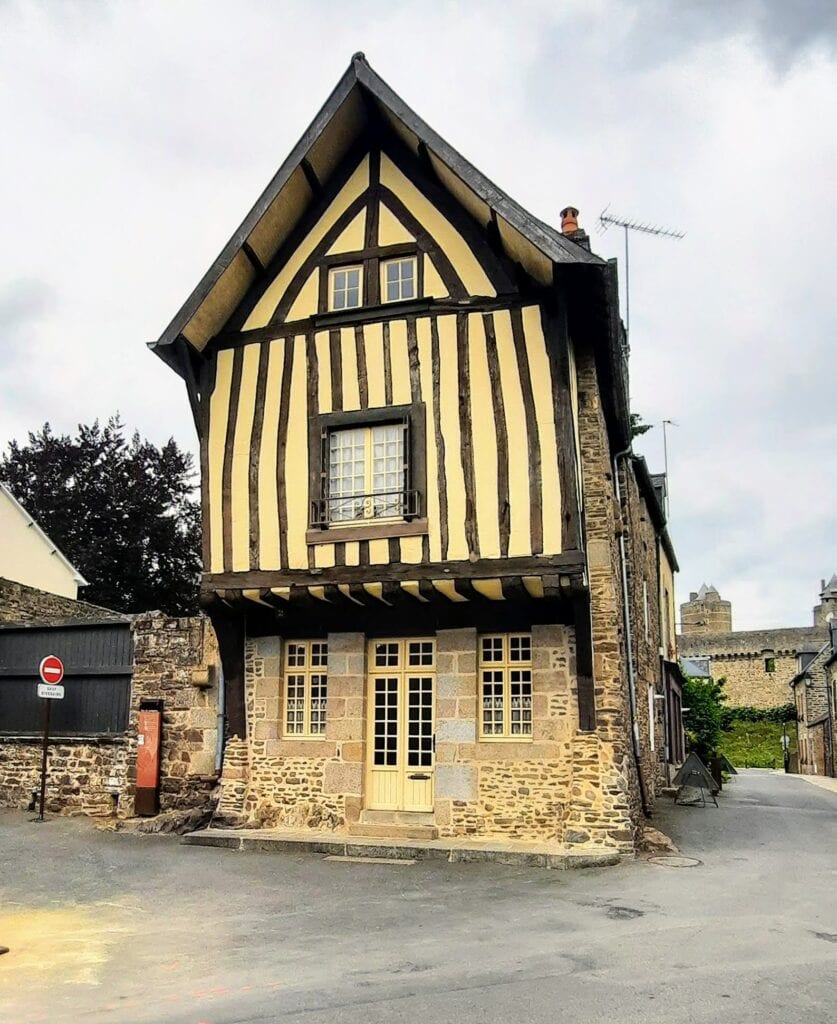
What to see outside Fougeres
You can go for a beautiful hike through the 1500 hectares of the Forest of Fougères. The forest’s magical ancient history includes the Cordon of the Druids, a row of 50 quartz menhirs stretching for 300m.
Several dolmens can also be found, the tombs of ancient dead kings and the Celliers de Landéan, a 12th-century underground room supported by 11 arches that is said to have once had a staircase leading up to the castle.
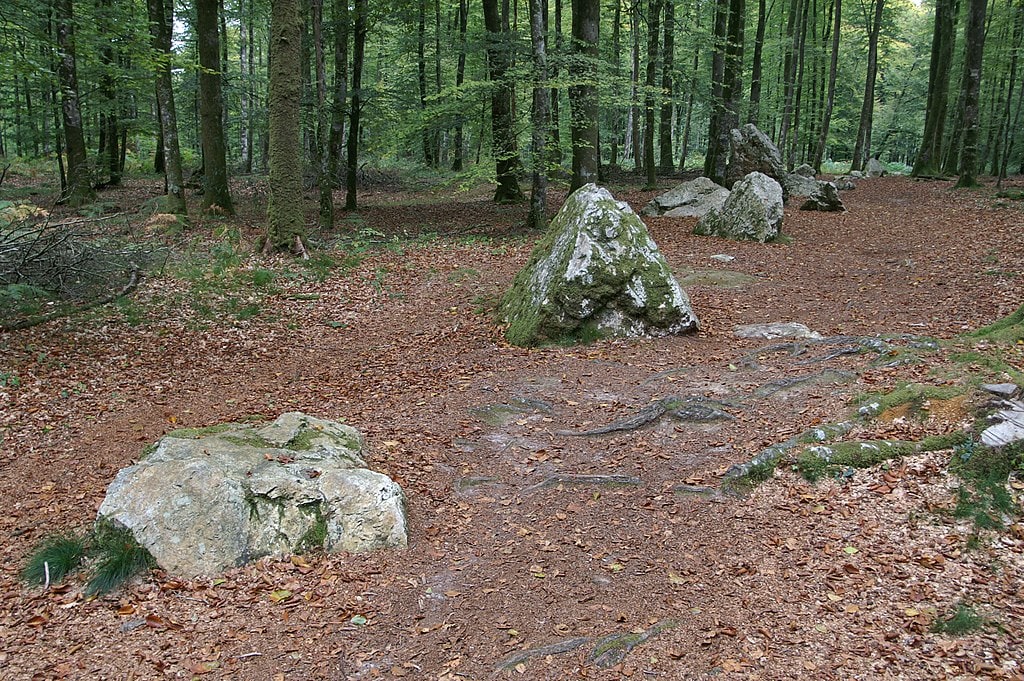
How to get to the Chateau de Fougeres (and Fougères)
Fougeres By Car
Fougères is a 3-hour and 20-minute drive from Paris on the A13 Autoroute. We drove from Lassay les Chateaux which was an easy drive and I would recommend parking at the Parking de la Poterne which sits behind the Chateau and is an easy walk to the chateau, lower and upper towns.
Places to Visit Around Fougeres
Visit the medieval village of Dinan
Head to Granville where you can visit Dior’s family home
Saint-Malo the ancient walled seaport that Jacques Cartier left to find Canada
Visit Cancale where you can eat oysters fresh from the sea like Anthony Bourdain
Learn about all the fabulous foods of Brittany
A bucket list item is Mont Saint-Michel, the UNESCO World Heritage medieval monastery that should be on your list
The Ultimate guide to visiting Rennes France another stunning medieval town centre to explore
Fairytale castles and Medieval towns – Château de Josselin – A 1000 years of history in the heart of Brittany
